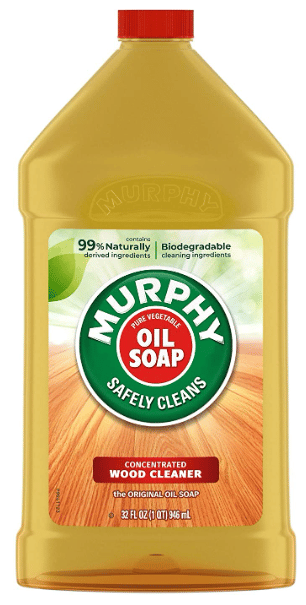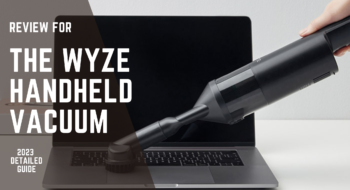Published by Ahmad Jamal on June 5, 2022 | Last updated on January 9, 2023
Murphy’s Oil Soap has been widely demanded specific cleaning chores, including the cleaning of ceramic tiles, hardwood floors, and more.
However, sometimes you just can’t get the soap-to-water ratio well, adding too much soap to the water, which will create a lot of soap buildup on the floor that extends the need for further cleaning.
Therefore, here’s a Cleaners Advisor Guide on How to Remove Murphy’s Oil Soap From Hardwood Floors.
I’ll explain what the Murphy Oil Soap does, and how to use it correctly.
Moreover, I’ll show you How to Remove Murphy’s Oil Soap From Hardwood Floors in 2 different methods.
What is Murphy Oil Soap
The Murphy Oil Soap is a cleaning product created by Colgate-Palmolive.
It’s widely used to clean hardwood floors, ceramic tiles, engineered floors, and painted wood.
When used correctly, Murphy Oil Soap can be of good use against a wide set of dirt and stains.

How to Use Murphy Oil Soap?
According to the official website of Murphy Oil Soap, you’ll need to add a single cup of soap for every 1 gallon of warm water to create the perfect solution.
To make matters easier, mix ¼ tablespoon with one liter of water, this solution works for smaller-sized buckets.
It also stated, “Your bucket should list its size on the inside; otherwise, picture a milk gallon jug to estimate the bucket’s size.”
Once you’ve created the solution, start mopping the floor after dipping it in the bucket, and repeat for the whole floor.
This video shows how to use it thoroughly.
Why Do You need to Know How to Remove Murphy’s Oil Soap From Hardwood Floors?
Using too much or improper formula of the Murphy’s Oil Soap will lead to adding more cleaning-related issues.
This results in making the floor both sticky and feels dirtier than before.
It’ll also feel like it’s covered in soapy foam and some greasy material.
Therefore, knowing How to Remove Murphy’s Oil Soap From Hardwood Floors will get your hardwood floors back in shape.
Elephant in the Room: How to Remove Murphy’s Oil Soap From Hardwood Floors
Before we start, let’s agree that we should always dry hardwood floors thoroughly after any type of contact with water, to prevent potential damage to the hardwood floors.
Additionally, avoid using too much water on the hardwood floors, excess amounts only damage the floors instead of helping the cleaning process.
How to Remove Murphy’s Oil Soap From Hardwood Floors: White vinegar solution
- Move the furniture & mats away from the hardwood floors.
- Fill in a bucket with a gallon of warm water.
- Add 2 cups of white vinegar.
- Mop in a small 3ft-by-3ft section, then dry it immediately with a dry cloth.
- Move on to another section of similar size, and repeat the same motion.
- Repeat until you finish the whole area.
- Check for areas that need more cleaning than other ones and repeat motion there.
How to Remove Murphy’s Oil Soap From Hardwood Floors: Water Only Mopping
If you feel that the Murphy Oil Soap isn’t that much of a problem and simple use of warm water is efficient enough to remove the soap from hardwood floors, then you can use warm water only, instead of the strong white vinegar.
- Move the furniture & mats away from the hardwood floors.
- Fill in a bucket with a gallon of warm water.
- Start dipping the mop into the bucket and remove as much excess water as possible before mopping.
- Mop in a small 3ft-by-3ft section, then dry it immediately with a dry cloth.
- Move on to another section of similar size, and repeat the same motion.
- Repeat until you finish the whole area.
How to Remove Murphy’s Oil Soap From Hardwood Floors FAQ
To Wrap Up
Creating a wrong solution using Murphy Oil Soap can cause problems to the hardwood floors. Luckily, this guide on How to Remove Murphy’s Oil Soap From Hardwood Floors has solved it all.
All you need to do is try the aforementioned 2 easy solutions, and you can still ask us about those methods and potential others in the comments section below.


![4 Best Heavy Duty Mop Models [Tested by Experts]](https://cleanersadvisor.com/wp-content/uploads/2023/03/Blog-Banner-for-Website-Content-22-350x190.png)

![4 Best Vacuums for Car Detailing [Tested by Experts]](https://cleanersadvisor.com/wp-content/uploads/2021/12/Best-Vacuums-for-Car-Detailing-1-350x190.png)
![4 Best Vacuums for Tile Floors [Tested & Tried]](https://cleanersadvisor.com/wp-content/uploads/2021/12/Best-Vacuums-for-Tile-Floors-1-350x190.png)
![4 Best Vacuums for Laminate Floors [Tested by Experts]](https://cleanersadvisor.com/wp-content/uploads/2021/12/Best-Vacuums-for-Laminate-Floors-1-350x190.png)
